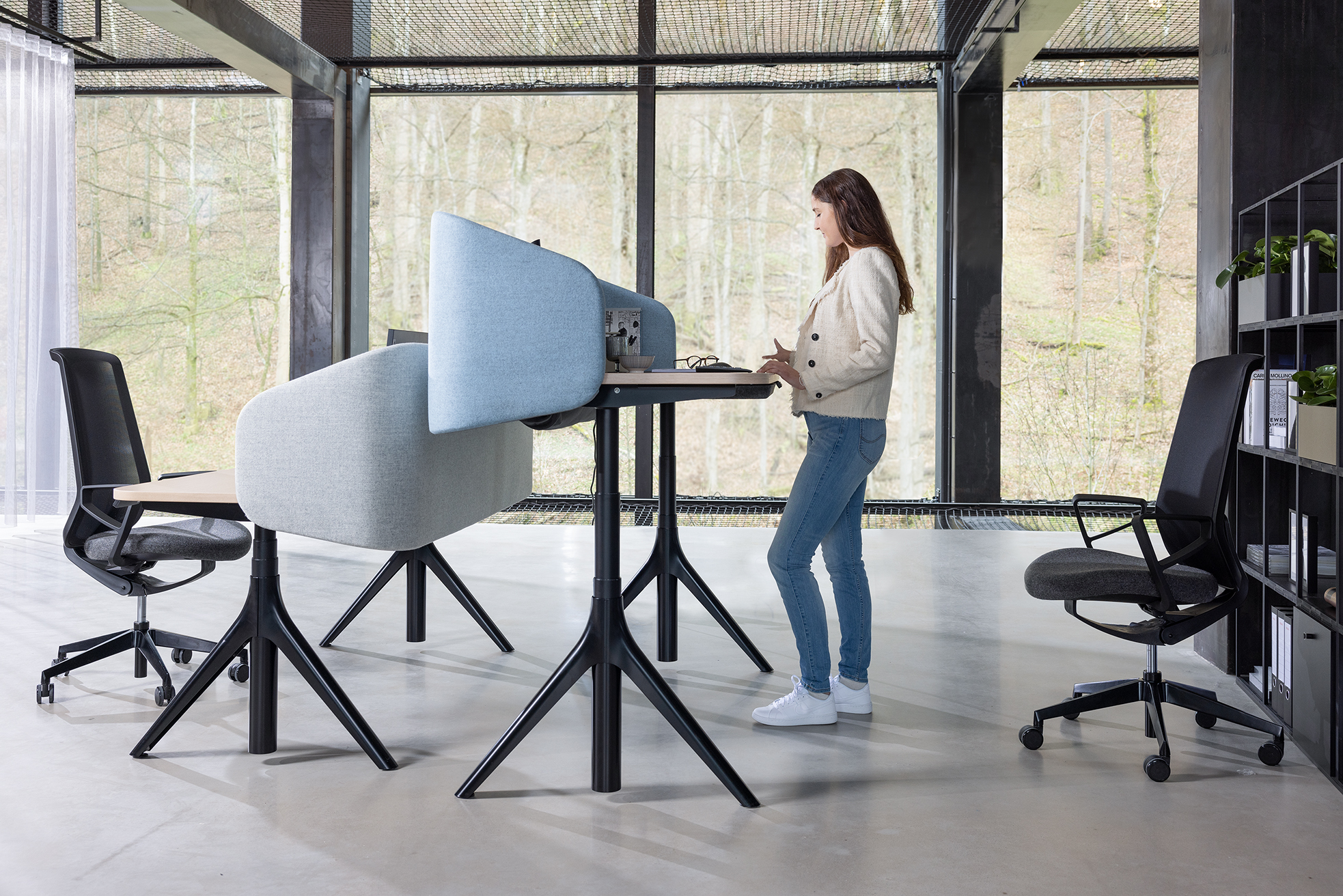Not to be neglected: ergonomics with shared desks and coworking areas.
By Helena Pumberger, 20.12.2023

Ergonomics – an important topic not just for classic workstations. It can be especially challenging to achieve good ergonomics with shared desk solutions and shared work areas. After all, these workstations are used by different people, and this calls for a constant adjustment of the work area to their physique.
The basics.
But let’s start with the basics of ergonomics. First and foremost, it is important to use an ergonomic office chair that allows dynamic, flexible sitting. It must be height-adjustable and provide good back support. The desk that goes with it should have a sufficiently large working surface of at least 160 x 80 cm. Integrated height adjustment is an advantage here too. The workstation must be arranged parallel to the window so that the light can enter laterally, preventing any glare or reflections. Curtains and blinds create the necessary dimming. If daylight is no longer adequate, artificial light with an illuminance level of approximately 300 lux is required in the immediate working environment. Notebooks are used almost exclusively when working at shared desks. For this reason, external screens should also ideally be provided. Additional benefits: keyboard and mouse.
Desk sharing: intuitive customisation.
There are quite a lot of requirements that an ergonomic workstation should meet. While some of the aforementioned aspects of the infrastructure are predefined, it is left to the user to customise the swivel chair and desk. It must be possible to precisely adjust the office chair, in particular, to the height of the employee concerned to enable ergonomic working.
With constant changes of user, this can become a real time waster in the long term. In addition, many of the setting options are sometimes not used or not used correctly. Having office chairs with automatic weight detection can help here. The mechanics of the chair react to the user’s weight. The more weight the seat is subjected to, the greater the resistance to the backrest suspension. This eliminates the need for manual adjustments, except for the height of the seat, resulting in an intuitive sitting experience. In order to be able to use the desk quickly and easily at the right height, a model with electric height adjustment is recommended. This allows the table to be adjusted and customised in seconds at the push of a button. It is also possible to work while standing, which relieves the spine and prevents any discomfort to the musculoskeletal system. In coworking spaces, in particular, a lot of work is done away from the classic desk. Here too, ergonomics should not be forgotten.
Sofas and other upholstered furniture are often used in silent rooms or creative zones. Side tables, shelving and notebook boards as well as readily available electrification can help promote ergonomic working in such room scenarios in the best possible way. For shared desks and coworking, the ethos is therefore: the less complex, the better! Fast adjustability, simple use, intuitive operation.




